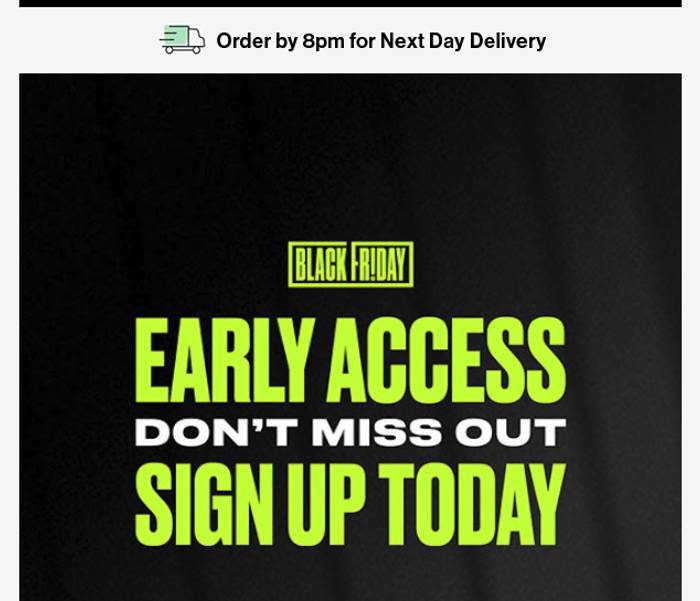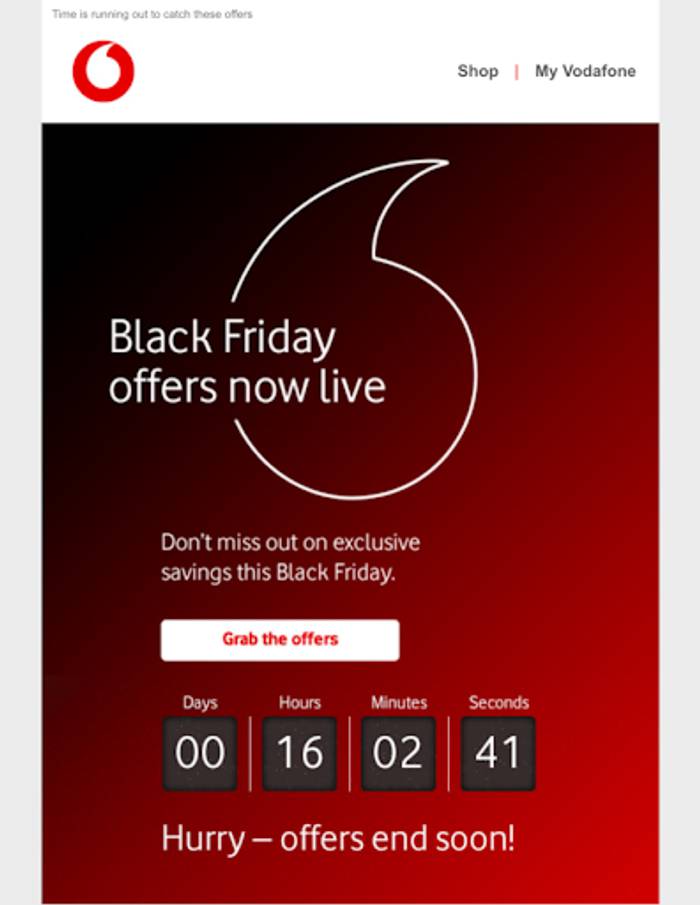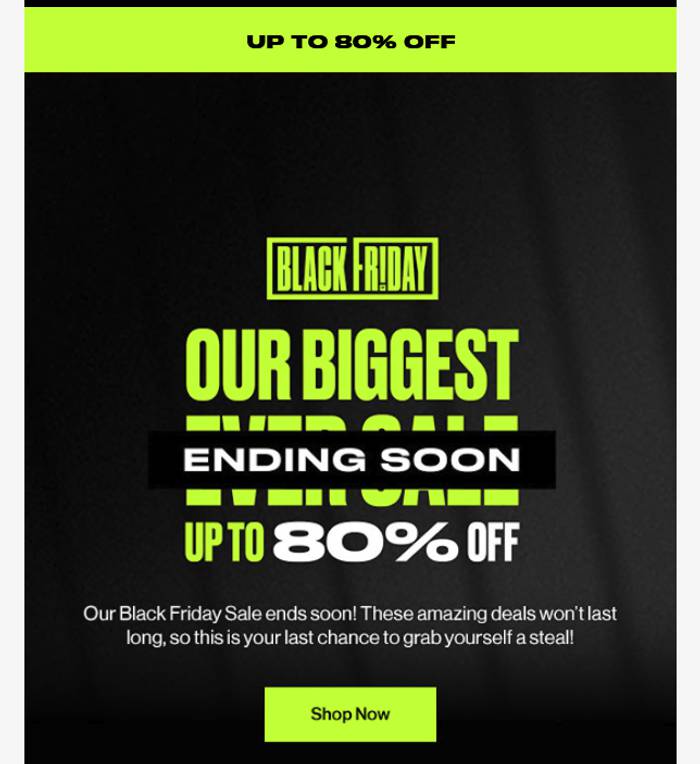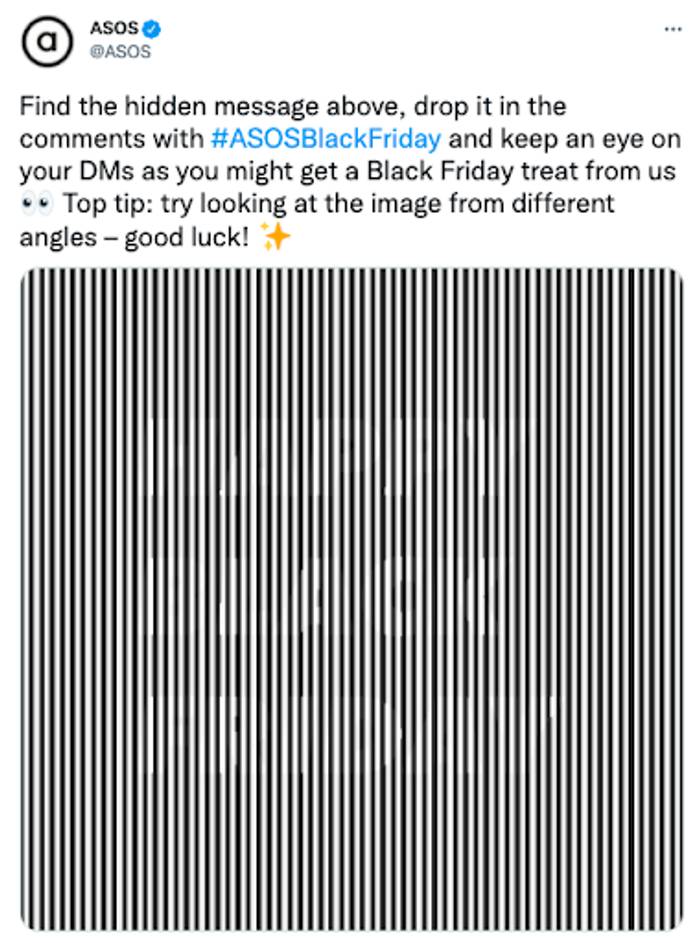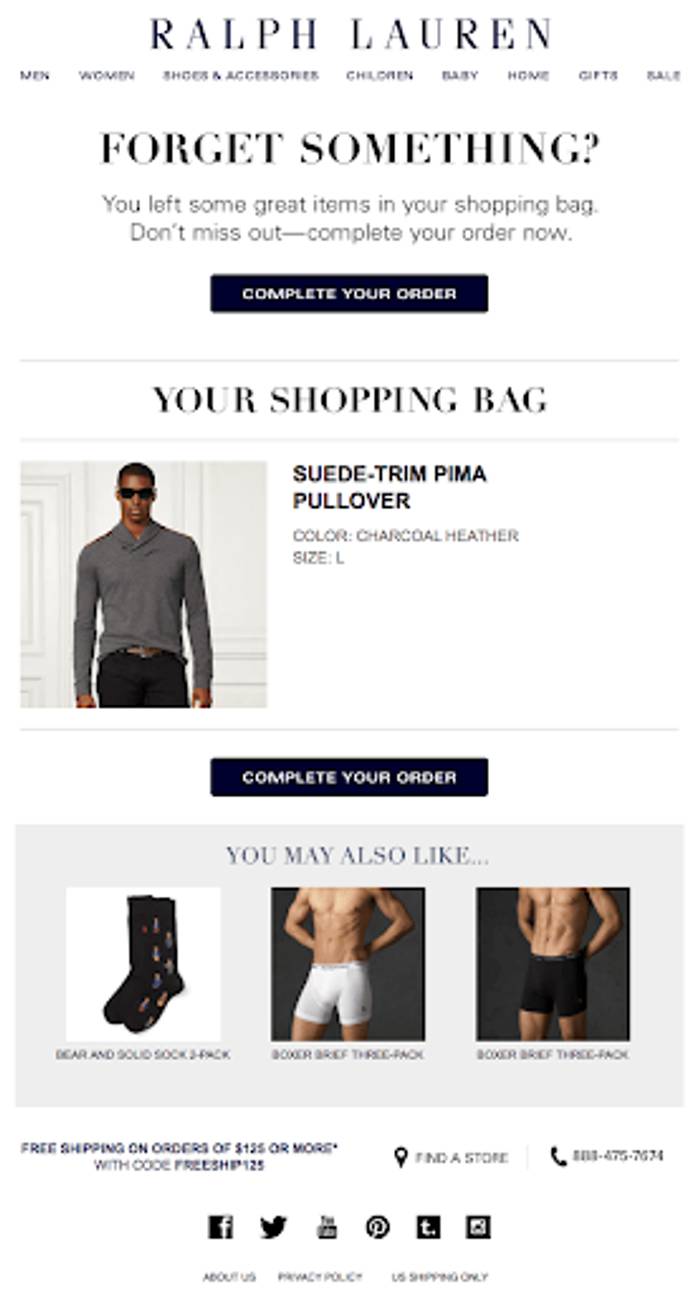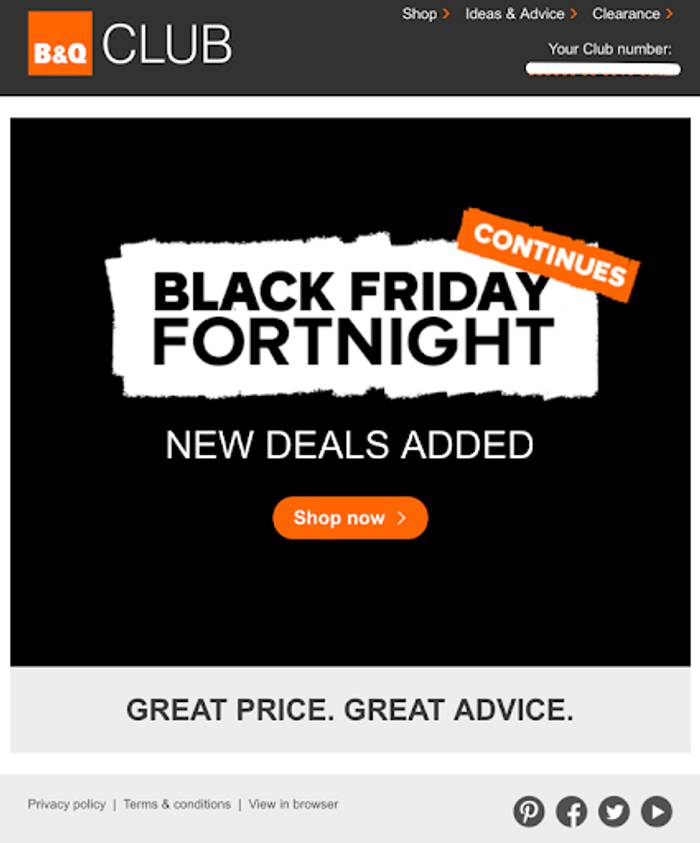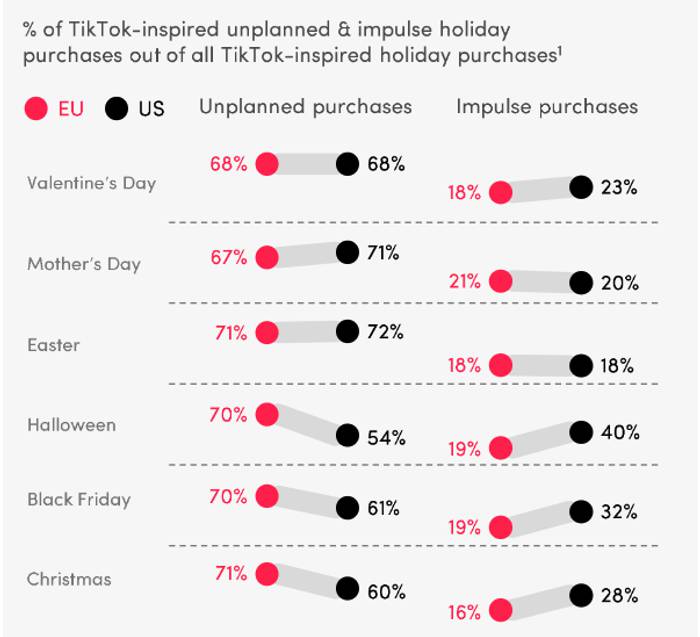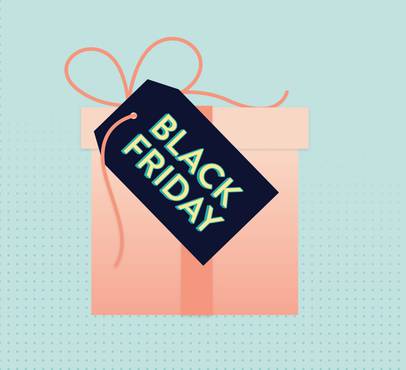Updated in October 2023.
So-called because it's when retailers' accounts go from being 'in the red' to 'in the black', Black Friday represents the start of the holiday shopping season. A golden chance to kickstart your sales ahead of the festivities.
Those of us in the UK account for 10 percent of all 'Black Friday' searches globally. Last year, inflation raised fears of dampened demand, but cozzie livs actually appeared to have the opposite effect: the opportunity to grab a sale heightened the importance of Black Friday in the UK.
- £12.3 billion was spent (up by 8.3%)
- 49% of UK consumers bought at least one item
- 16% of purchases were for clothing or footwear
- 39% bought an item on Amazon
- 51% of shoppers made an 'impulse purchase' during Black Friday
Expect much of the same in 2023. Even though many consumers report being sceptical and disillusioned with the 'offers', they still evidently lap them up.
“During a time of heightened value-consciousness [in 2022], Black Friday savings were naturally more important, which looking forward to 2023, will continue to ring true as finances remain under pressure.”
Taking a proactive approach to your Black Friday marketing is key for cutting through the noise and connecting with customers in a time when they’re bombarded with discount codes and sale announcements.
Give your business' bottom line a tidy Q4 boost by weaving in a few tried-and-tested tactics from our team of digital marketing experts.
1. Provide pre-Black Friday access or offers
Millennials and Gen Zers value exclusive access to limited products and experiences nearly twice as much as Gen X and Baby Boomers.
Capture attention by offering exclusive, early access to deals and offers, in exchange for signing up to your email list.
Not only will this help you with your marketing efforts for the big event, it will also generate a network of subscribers you can tap into.
You could use social media, website pop-ups or other list-building tactics such as referral programmes; perhaps consider adapting your messaging to suit different audiences.
Whatever you choose to offer — free postage, further discounts, a free gift, or simply the original early bird saving — as the day approaches, let them know your virtual doors are open for business exclusively to those who signed up in time.
Some brands simply choose to start their Black Friday activity ahead of the actual weekend, without offering exclusive discounts to subscribers and instead opting for one set sale price for all shoppers. Some start a few days early (like makeup brand Nars), whereas others, like Amazon, have been known to run month-long Black Friday sales!
2. Use countdowns to create a sense of urgency
Leverage fear of missing out (FOMO) by creating a sense of urgency ahead of (and during) your Black Friday campaign.
Whether through social media, website pop-ups or email campaigns, copy needs to inspire action. It may be a literal countdown clock, or reminders to their inbox. The aim: to generate excitement around (and awareness of) your offering.
34% of shoppers sign up to receive offers and other communications from brands before making their first purchase, demonstrating the importance of this kind of activity.
3. Provide exclusive channel-specific offers
Creating unique discount codes for use across different areas of your marketing activity will provide insight into the effectiveness of each channel. This may help to shape future campaign activity and budget planning — but of course be aware of the supporting role each channel plays, even if it didn't directly 'cause' the sale.
Using social media to drum up sales for Black Friday
Shopping functionality across platforms like Facebook, Instagram and TikTok continues improve — 35% of consumers have purchased products or services directly from a social media platform. Engage your Black Friday audiences using them.
You could make use of a network of social media influencers, providing each with a specific Black Friday code for them to promote to their followers, or simply create one code per platform. As tracking becomes more difficult, using channel-specific discounts to monitor impact.
4. Write personalised emails
Email is a relatively low-cost method for connecting with your audience — a time-honoured channel that delivers excellent RoI. Hit your customers up with bespoke messaging and tailored offers directly into their inbox.
Subscribers typically recognise they’re able to access greater savings if on your email list, and so they’re likely to hold out on purchasing from either you or your competitors until they know what exclusive offers they can get their hands on.
As they’re often inundated with marketing emails during this period, it’s important you time your messages well and tailor them to their needs — whether that be introducing a new customer to your best sellers or highlighting products existing customers have shown an interest in previously.
Be a segmentation specialist
Consider segmenting your audience by interests, products previously purchased and demographics, allowing you to take the personalisation to another level.
You could also encourage shoppers to create a wish list of products they want to purchase once your sale starts, ahead of time. They'll not only become familiar with your product range, but you'll also be able to retarget them at a later date with specific recommendations.
5. Perfect your pop-up strategy
From gathering email information to promoting your Black Friday offers, pop-ups are a great tactic to prevent shoppers from leaving your site empty handed.
There are a number of ways you can use them, and at different times depending on where your customer is along their journey with you. If they’ve just arrived on your site, consider using them as a greeting and chance to ask for an email address.
They can be used to display your Black Friday offers, too — for example, how much customers need to spend to get 20% off versus 30% off, or the discount code for free shipping should you have one.
You can also reward your VIP customers with a special discount code at checkout, by utilising e-commerce smart segmentation, which allows you to target specific audience groups with a specific message.
Use pop-ups sparingly, of course. They have the potential to irritate.
6. Remember to retarget
Retargeting customers is key for maximising conversions and staying relevant in the midst of all the marketing noise surrounding shoppers at that time. There are different methods for retargeting depending on where they are in the customer journey.
Abandoned cart emails
Be sure to reach out to those who haven’t completed their purchase with an abandoned cart message — one of the simplest, most effective types of behavioural email marketing.
You may want to team this message but an additional discount code or a free shipping incentive — they're a hot lead, after all.
Retargeting ads
There are many options when it comes to creating retargeting ads, chief among them being Google Ads Manager and Meta Ads Manager. These allow you to get your products and Black Friday offers directly in front of those who have visited your site recently, but may have ended their customer journey before making a purchase.
However, before deciding on how to best invest in your paid media strategy, it’s important to consider where exactly those customers are most likely to be while online.
A proportion of your customer base may in fact use Bing as a search engine instead of Google, where you can often secure cheaper CPCs and higher click through rates due to less competition from other advertisers. Or, they may be on Instagram but not so much Facebook.
Understanding your audiences is key when determining your paid media tactics. For more information, take a look at our article on creating the perfect Black Friday PPC strategy!
Recommend future purchases
As any e-commerce shopper will know, you can be retargeted with items 'you may also like' based on your browsing history.
7. Drive footfall & provide value to maximise in-store sales
Despite e-commerce's expansion, some customers still prefer to head into a store when making a purchase. If bricks-and-mortar still forms part of your marketing strategy, then create a buzz and sense of exclusivity around your Black Friday offers.
At a time where shoppers can buy most products online from any retailer, stores should consider going beyond simply selling physical items. How about unique in-person experiences?
Try serving food and drink — from cupcakes and coffee to canapes and prosecco, provide something your customers can enjoy while they shop.
Offer added value with services — what could you offer shoppers in return for spending money at your store? Free makeovers or customisable products are two possibilities.
Hold an event or class — a yoga session? A craft-making class? Draw people in with an experience relevant to your business.
Marrying up online and offline — if you have space, create a designated Instagram wall. Encourage location tagging and hashtags for customers to share on social media.
8. Push loyalty programmes
Convert one-time customers into lifetime buyers with loyalty programmes. This helps you maximise on your newly-acquired Black Friday traffic, providing shoppers with reasons to keep coming back for more. Gather birthday information for an annual discount code treat, maybe.
Essentially, use Black Friday as a launchpad to build a customer base — and commit to staying relevant year-round. What did customers buy? Show them more of what they like throughout the year.
9. Extend your Black Friday period & encourage repeat custom
Last year, inboxes around the world were inundated with more than 10 billion promotional emails over the course of the super-sale weekend. Fortunately, you've got licence to extend things a little over a longer time period, so you’re not competing with almost every other business.
This gives customers the chance to peruse your wares at their own leisure, and perhaps even make multiple purchases. Those that buy once are 32% likely to return, while those that buy twice are in fact 54% likely to return.
By incentivising and encouraging repeat purchases during Black Friday, you can increase the likelihood customers will continue to return once your promotion ends.
10. Plan for unplanned purchases on TikTok
The purchase journey is shorter on TikTok than on other channels, which means that next sale could literally be only a tap away.
Ever heard the phrase #TikTokMadeMeBuyIt? It's the ultimate product discovery channel. You'll definitely want to factor into your Black Friday marketing plans.
Those whippersnapper Gen Zers are discovering all sorts of products, services and experiences there.
We've created a number of Insights articles about how to maximise TikTok depending on your sector or niche.
“TikTok triggers more unplanned and impulse purchases compared to other leading platforms across the holidays in the US and EU.”
Need a helping hand developing your Black Friday strategy? Drop us a message.
Supercharge your Black Friday and Cyber Monday success
Get in touchPost by

Lucie is our lead on all paid media activity, overseeing our talented paid media team and managing the strategy and implementation of all paid search campaigns across multiple platforms. Fully Google qualified and working directly at Google prior to joining Extreme, there's not much Lucie doesn't know about PPC!
Project
Post by

Laura joined Team Extreme in 2017 and through the years has refined her social media skills to become our Paid Social Strategist. She works with our social clients to plan and execute content across a broad range of sectors and channels, helping clients maximise their results and ROI.
Project
Post by

Our SEO Lead with over 15 years’ experience, James calls on an extensive knowledge of search and works closely with our content team to deliver targeted, results-driven SEO strategies.
Project

